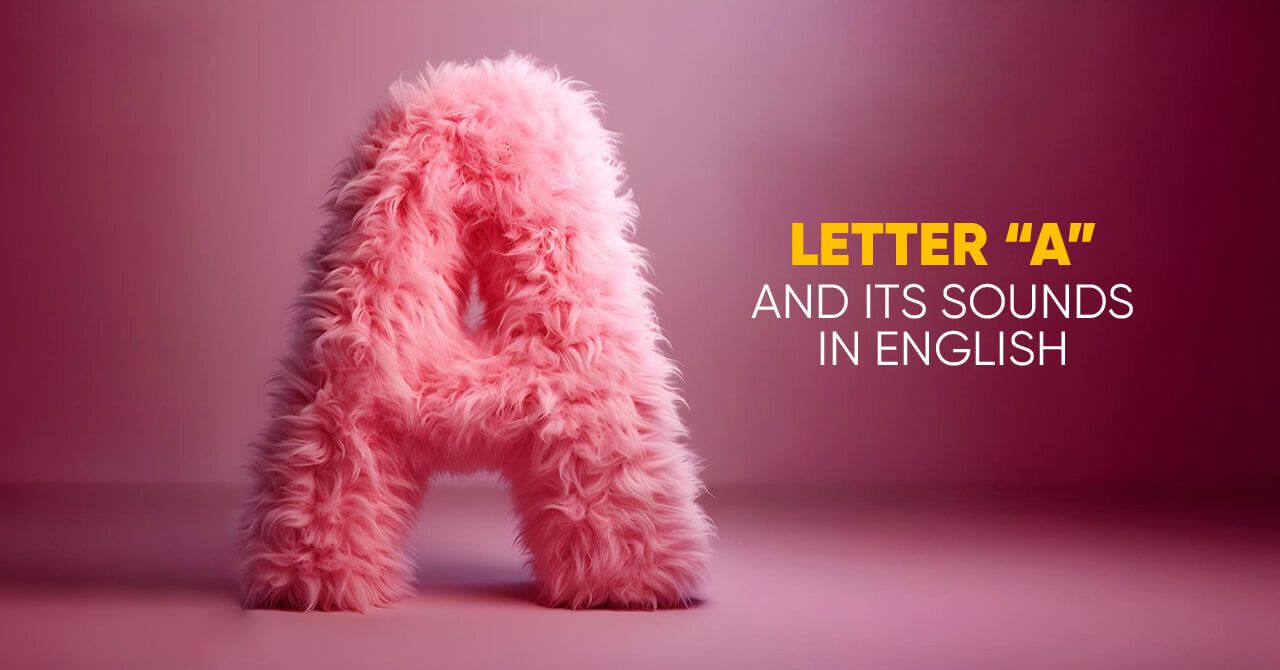Understanding the Complexity of the Letter “A” in English
One English letter can stand for one or even up to five or more sounds. Wow! Sounds complex, right? Don’t worry!

Why does the letter “A” sound different in words?
Have you ever wondered why the letter “A” sound in “apple” is different from the one in “ape” and why the “A” sound in “pizza” is different from the one in “pasta”? Guess no further! The reason simply is, like in every other English letter, there is usually no one-to-one correspondence between the letters of the alphabet and the sounds of English. This means that one English letter can stand for one or even up to five or more sounds. Wow! Sounds complex, right? Don’t worry! With a good guide, you will be able to understand the complexity of not just the letter “A” but all the other letters of English, step by step.
The sounds of the letter “A”
The first rule of thumb is to know that each letter has a name and a sound. It is just the same way a dog has a name and a sound it makes. Therefore, what is the name of the letter “A”? It is simply “A,” as in the sound you hear at the beginning of the words “ape” and “apron.” And what sound does it make? It is [æ], and that is the sound “A” makes in the words “apple,” “cat,” and “cap.” So you can say this rhyme to consolidate your understanding of it: the name is “ay,” and the sound is [æ].
Long and short sounds of the letter “A”
Interestingly, each vowel letter has two sounds. A long sound and a short one. As in the case of the letter “A,” the long sound is [eɪ], and the short sound is [æ].
When to use the long or short “A” sound
How, then, do you know when to pronounce a word with the long sound [eɪ] or the short sound [æ]? There are a few rules to help us practice.
Consonant-vowel-consonant rule
This means that when the letter “A” is between two consonant sounds, it is articulated with the short [æ] sound. For example, mat, rap, slap, clap, map, rat, jam, Sam, ham, and the list goes on and on.
The silent “e” rule
When the letter “a” occurs before a consonant and the vowel “e,” then it is produced with the long [eɪ] sound. In the following examples, I will place the words with the short sound first and then the ones with the long sound as minimal pairs:
Mat—Mate
Rap—Rape
Sam—Same
Tap—Tape
Gap—Gape
Man—Mane
Hat—Hate
Jack—Jake
There is one major exception to this rule: the word “have.” Although it ends with the silent “e,” it has the short vowel sound [æ].
The “A” sound in digraphs
It is interesting to note that the letter “A” makes the [eɪ] sound in the following digraphs. A digraph is a combination of two letters that produce one sound or more.
Ay—ai
Day—Tail
Say—Pain
Way—Paid
Pay—Waist
Today—Main
The “ai” digraph occurs in the middle of words, while the “ay” is usually placed at the end of words.
The “ar” rule or R-controlled “A”
The letter “A” is usually pronounced “aar” when “a” and “r” are written together. The following are a few examples: art, part, park, dark, market, carpet. This sound is often represented phonetically as [ɑ:].
Apart from the letter “A” being articulated as [ɑ:] when the “A” and “R” are written together, it still produces the [ɑ:] sound in the following words:
alm—aft—ass
Calm—after—pass
psalm—half—grass
palm—staff—class
balm—draft—pass
The schwa sound
This is the sound that the letter “A” gives in most two-syllable words, where the letter is usually at the beginning of the word and stands alone as one syllable. Here are a few examples: about, again, away, ago, around. Moreover, the letter “a” can still produce the schwa sound in other contexts, such as in chemical, medical, and hospital.
The “A” that is pronounced as [ɔː]
The letter “A” is usually pronounced as [ɔː] when the “A” occurs with the following letters: al, aw, au
al—au—aw
Ball—Sauce—Saw
Call—Cause—Raw
Walk—Pause—Claw
Balk—Author—Draw
Talk—Launch—Straw
Note that the letter “A” makes the [ɔː] sound in the word “water.”
The “A” is pronounced as [eə]
There are few words in English where the letter “A” is pronounced as “air.” This is written phonetically as [eə]. Here are a few examples: parent, hilarious.
Moreover, the “A” in the following trigraphs is pronounced as [eə].
air—are
pair—share
hair—hare
Stair—scare
Hair—rare
Chair—aware
The “A” is pronounced as [e] and [ɪ]
The “A” can also be pronounced as [e] in the words “says” and “said” and as [ɪ] in the words “bondage,” “senate,” “village,” etc.
Sentence practice
Can you say the different sounds the letter “A” makes in the sentence below? Jack was about to share his private yacht with his football coach when he received a cable from his parents informing him that the engine needed repair.
Conclusion
Understanding the different sounds produced by the letter “A” is a key to mastering reading. Although this might seem a bit complex, with persistence and practice and with a good guide, you can come to understand not only the letter “A” but all the other letters and the sounds they make.English

I'm an English teacher with a strong passion for phonics and pronunciation. I particularly like to help students master the art of reading English using the sound-based method of teaching reading.



